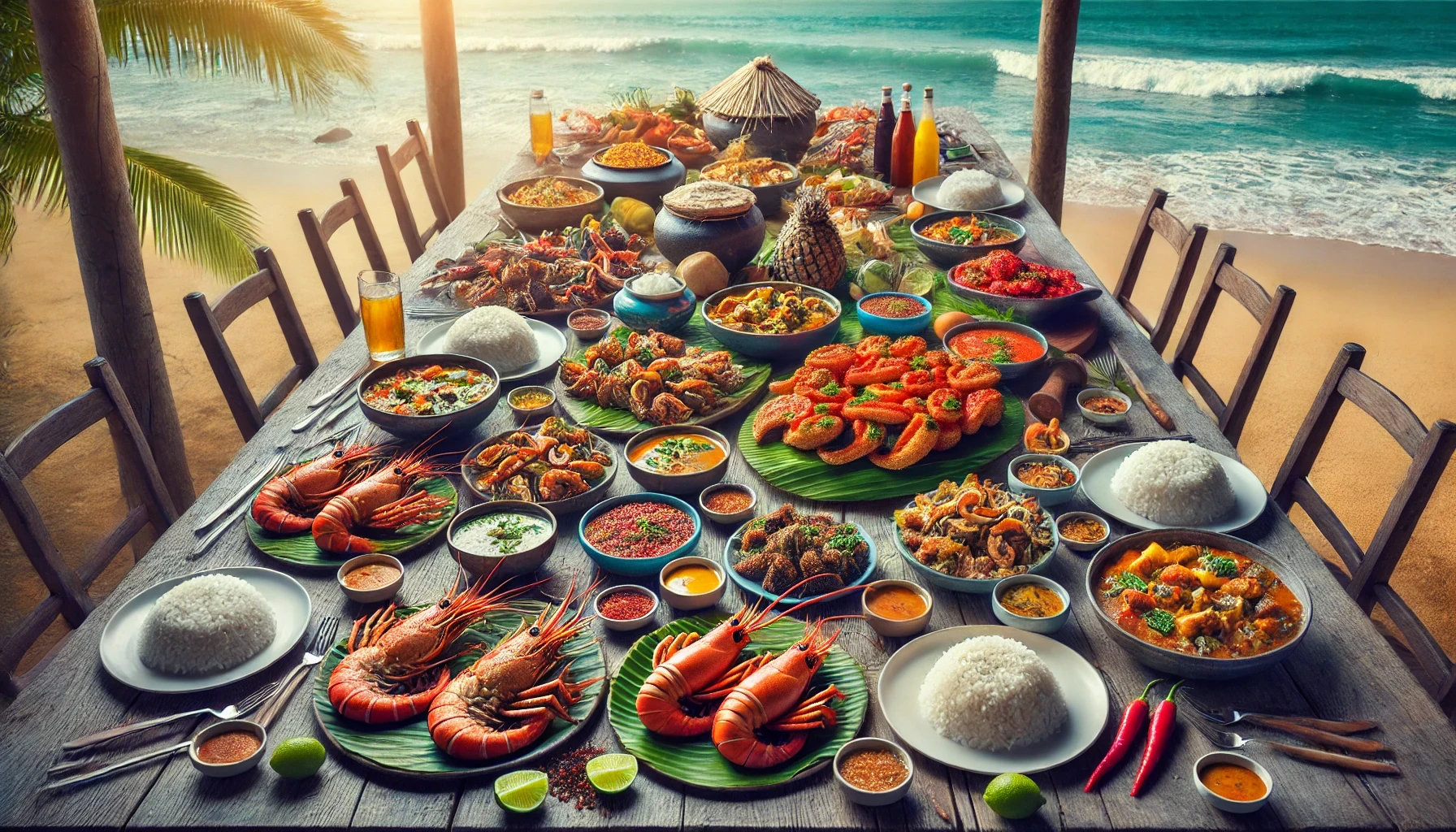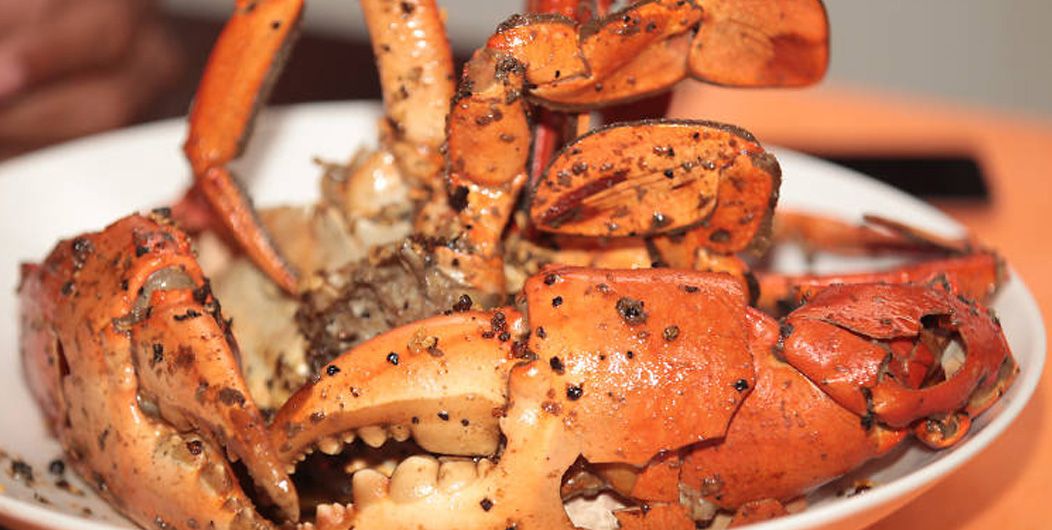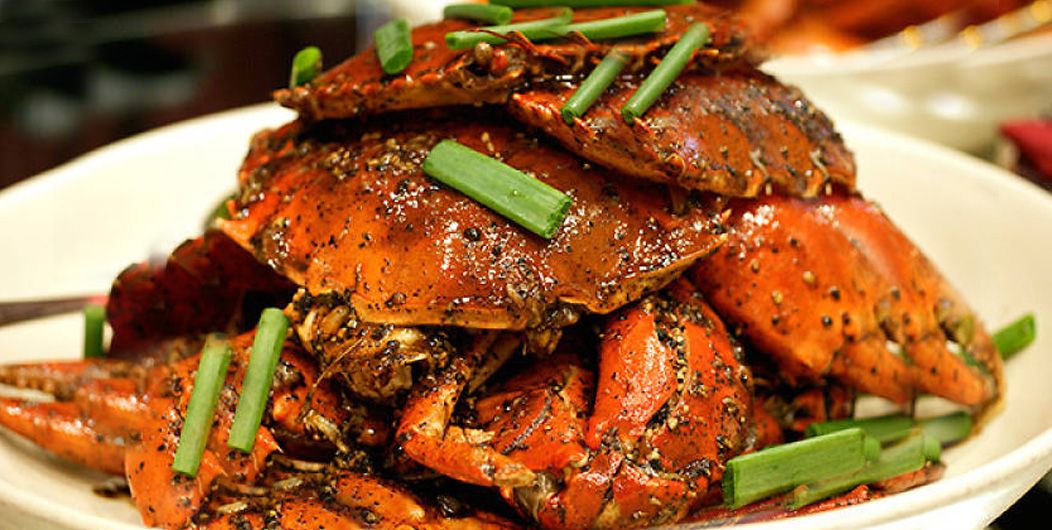Sea Food

According to the Seafood Exporters Association of Sri Lanka, Yellowfin tuna (Thunnus albacore) and bigeye tuna (Thunnus obesus) are the key varieties of finfish exported by seafood suppliers from Sri Lanka. Fresh tuna is an exclusive delicacy. Export grade tuna from Sri Lanka are hand-line, pole-line or long-line fished, gutted, gilled and chilled at sea. Incidentally, a longline is a deep-sea fishing line from which many short lines with baited hooks are suspended.
Yellowfin Tuna from Sri Lanka
Locally known as Kelavalla, yellowfin tuna is one of the most popular fish in Sri Lanka, and it’s among the larger tuna species found in the Indian Ocean. There’s a considerable demand for yellowfin tuna for both exports and domestic consumption. The main export destinations for yellowfin tuna from Sri Lanka are the United States, France, Israel, Netherlands and Canada. While it can grow up to 150kg, the average weight of the catch could range between 25kg to 90kg. The largest yellowfin tuna ever caught to date is reported to have weighed 445 lb(approx.202kg).
It had been caught in December 2012 at Hurricane Bank, Mexico in the Pacific Ocean. Yellowfin tuna are so named because they sport a yellowfin on the upper side. It's mainly taken at deep-sea on long-range (multi-day) vessels through the long lines. Apart from its unique flavour, the main reason behind its enormous popularity, it's very nutritious seafood from Sri Lanka.
Bigeye Tuna from Sri Lanka
The Bigeye tuna is generally the size of yellowfin, but smaller than bluefin. It’s found in the subtropical and tropical areas of the Indian, Atlantic (but not in the Mediterranean), and Pacific Oceans. The largest Bigeye tuna can grow up to weigh more than 180kg (400 lb) The fresh and frozen Bigeye tuna is sold to foodservice operators as loins and steaks. France, Viet Nam, China, Thailand, Italy and the United States are the key export markets for the Bigeye tuna. The Bigeye tuna is highly popular in major restaurants worldwide. They are a good source of phosphorus, selenium, vitamin B6 and vitamin B12.
Key Tuna Products
- Whole fish
- Loins
- Saku blocks
- Steaks
- Belly
- Cubes
Sri Lankan tuna products are exported mainly fresh in open or vacuum packs.
Other Varieties of Finfish Exported from Sri Lanka
- Skipjack tuna (Katsuwonus pelamis)
- Billfish (Istiophorus sp., Makariya sp., Xiphias sp.)
- Dolphin fish (Coryphaena hippurus)
- Spanish mackerel (Scomberomorus s.p)
- Trevally (Carangoides sp., caranx sp.)
- Barracuda (Sphyraena sp.)
- Groupers (Epinephelus sp.)
- Snappers (Lutjanus sp.)
- White mullet (Liza sp., Mugil sp.)
- Parrotfish (Scarus sp.)
- Ribbonfish (Chirocentrus sp.,).
Other finfish products include whole fish, loins (billfish only), steaks and fillets. Finfish is also exported alive (grouper only), fresh (in open or vacuum packs), frozen or canned.
Lobster Exports from Sri Lanka

Lobster, a delicacy that every seafood lover invariably longs for, is a crustacean exported also from Sri Lanka. Its meat is variously described as tender, sweet, and succulent. It’s rightfully the king of crustaceans, which amongst the cornucopia of seafood Sri Lanka is renowned for – fish, prawns, octopus, scallops, oysters, mussels and more, is considered the greatest delicacy.
The lobster species commonly found in Sri Lanka include:
- Ornate Spiny lobster or the Tiger lobster (Panulirus ornatus)
- Painted Spiny lobster (Panulirus versicolor)
- Longlegged Spiny lobster (Panulirus longipes)
- Scalloped Spiny Lobster (Panulirus homarus)
- Pronghorn Spiny Lobster (Panulirus penicillatus)
Of these, the most sought-after is the Ornate Spiny Lobster, which is by far the priciest as well. A rich source of niacin, Vitamin B12 and zinc, lobsters only turn red when cooked and are usually blue-green when fished.
Lobsters are caught off the reefs at depths of 30-300 feet, by divers who will also use scuba equipment or aqualungs to reach their catch or place crayfish traps on the seabed. Lobsters are also caught in nets along with other fish and the companies get the fresh catch from the supplier, which is then taken to their collecting centres and placed in aerated tanks of seawater for a few days.
The burgeoning demand for lobsters has, however, raised grave concerns over the depleting stocks. Lobsters are exported to countries such as Hong Kong, China, Japan, Taiwan, Maldives and Singapore. Lobster fishing is also prohibited in February, September and October - the breeding season. There is a ban on catching egg-bearing and under-sized lobsters with the sizes being specified.
The lobsters are such a prized delicacy across the world that their appeal is universal constrained by no borders. Interestingly, some reckon lobster as an aphrodisiac as well. European folklore has it that the rich and creamy French classic lobster dish, Lobster Thermidor which is said to have been named by Emperor Napoleon after the month when he first tasted it (Thermidor was the 11th month in the Republican calendar after the French Revolution).
Source live and frozen lobsters from Sri Lanka >
Crab Exports from Sri Lanka

Crabs are yet another prized delicacy among the seafood or the edible fish caught in and exported from Sri Lanka. The Blue Swimming Crab (Portunus pelagicus) makes up the bulk of the Sri Lankan crab exports basket, both in terms of volume and value. Mud crabs (Scylla serrata) are exported alive or as chilled fresh crab. Major crab products supplied by Sri Lanka include chilled and frozen fresh crab and pasteurized crab meat (canned).
Mud Crab / Sri Lankan Lagoon Crab
Also called black crabs, mud crabs inhabit lagoons in dry zones. Sri Lanka has climatic factors along with partial wetlands conducive to mud crabs. Lagoons, mud, and water are the most preferred nature features for them whereas mangroves provide them with the ideal living space. The same species has been developed into a giant Mud Crab due to the diverse climatic and genetic factors. Known as the Green Crab or the Lagoon Crab, what Sri Lanka produces is a giant crab species related to the mud crab (Scylla Serata). It takes its name from the surroundings that turn it green.
The milky and delicious taste of the Sri Lankan Mud crab has earned it a global reputation; hence, it enjoys a high demand in the international markets. Sri Lanka lagoon crabs are also unique due to their sheer size. Mud crabs elsewhere in the world don’t grow as large. So, Sri Lanka makes an ideal sourcing hub for the largest and tastiest mud crabs in the world.
Blue Swimmer Crab
Also called Flower Crab, Blue Crab, Blue Manna Crab and Sand Crab, the Blue Swimmer Crab (Portunus pelagicus) is a species of crab caught in and exported from Sri Lanka. Blue Swimmer Crab occurs in the tidal estuaries of the Indian and western Pacific. Sri Lanka is one of its favourite habitats. A delicious food, the Blue Swimmer Crab meat contains vitamins A, B and C plus other nutrients such as potassium, zinc, selenium, manganese, sodium, and iron. It’s also considered good for cardiovascular diseases and known to promote skin rejuvenation and lower blood cholesterol levels. Sri Lanka is a good sourcing destination for blue swimmer crabs.



0 Comments